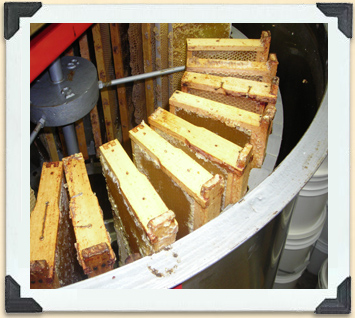The Keeper

In a radial extractor, centrifugal force pulls the honey out of the uncapped frames. Such machines range in capacity based on the number of frames they can hold.
© Ontario Beekeepers' Association, Technology Transfer Program
Extracting
Extracting the honey means removing it from the hive frames. To do this, the uncapped frames are spun in a machine called an extractor. Centrifugal force draws the honey out of the combs and into a reservoir. For this process to work well, the honey must be warm enough to flow, and so it's best to extract it as soon as possible after the frames have been removed from the hives, while they still contain some heat. Otherwise, the frames should be left in a warm room prior to extracting.
Extractors vary in size and in the type of technology they use, but the mechanical principles differ very little. The smallest extractors are two-frame manual types, whereas some others are completely automated, and can hold 120 frames at once and process over 600 frames per hour.




















